Remote Ready Biology Learning Activities has 50 remote-ready activities, which work for either your classroom or remote teaching.
Serendip is an independent site partnering with faculty at multiple colleges and universities around the world. Happy exploring!
link to avablitz.net
In 1994, I was invited to spend six months in Japan, sponsored by a
Japan Foundation - TAMA
International Artists in Residence Fellowship. There were sixteen
artists from all over the world who participated in the program.
I spent my time working in the company of four other sculptors, each
of whom created a
large-scale permanent site-specific public work. It was a highly valued
experience where I learned much from my fellow artists and was further
influenced by the sensibility of Japanese art.
I chose to create a sculpture garden installation in a very hard native Japanese stone called dorokaburi (mudstone), which is a form of basalt. The original round stone was covered with a patina of fossilized mud in tones of yellow and gold, while the interior was dark grey or black. As the sculptures evolved, I found myself playing with the varied possibilities of texture and surface; the natural colorful skin, the light grey pitted surface created by a bush hammer, the concentric or parallel lines created by a diamond cutter, and the rich black of the polished stone. A sense of the material itself and an expression of the process of carving were therefore important in the development of my pieces.
The sculptors' facility was located in the lumbering community of Hinode in the TAMA prefecture outside of Tokyo. My immediate environment, surrounded as it was by the gardens, streams, and forests of this country setting, had a powerful effect on the form that the installation would take. The organic forms that evolved recalled seeds, buds, shells, hives, flowers. Female symbols of growth, nature, and nurture, they were soft but carved in hard and massive stone.
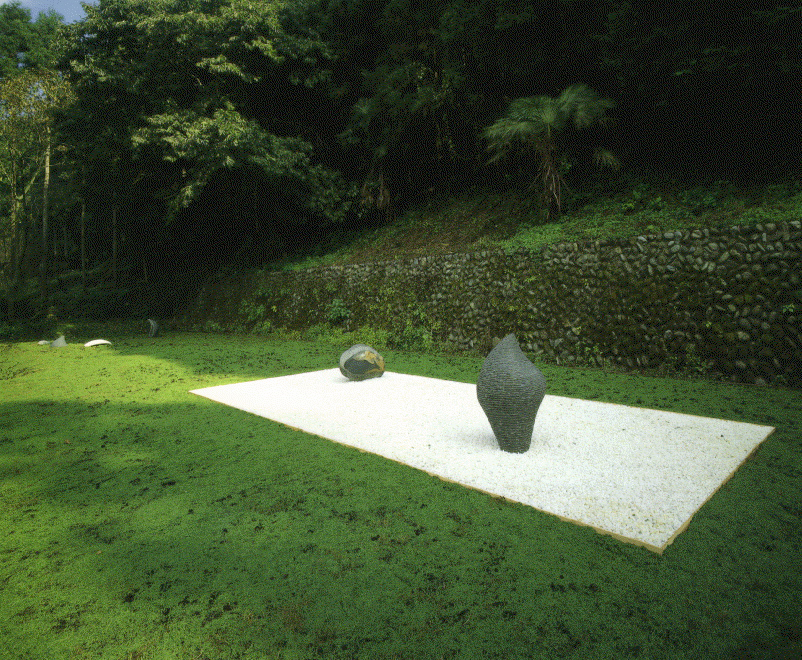
The site I selected was a long narrow plot, 127 feet long and
32 feet wide, adjacent to the artists' residence.
I chose the site for many reasons. For one, it was edged
by a beautiful moss-covered cobblestone wall which recalled the
former foundations of an earlier building. It had a sense of human history
(memory) and was a quiet, protected sunny enclosure, an appropriate
environment for a seed bed or a garden.
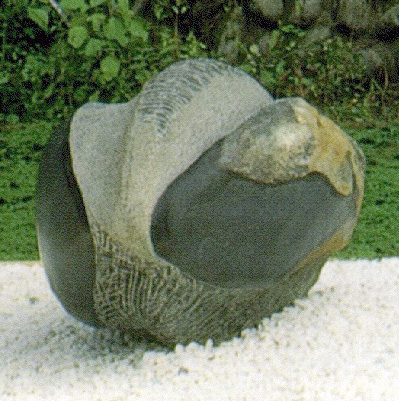
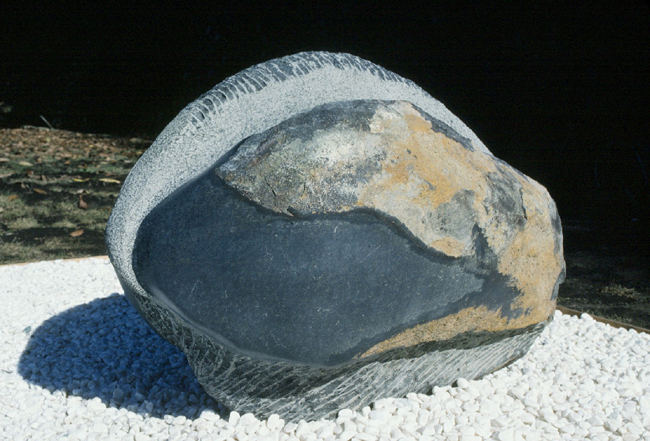
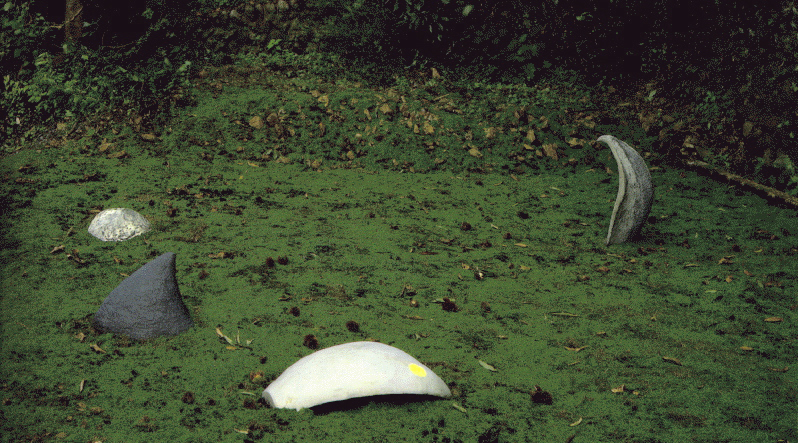
I carved two dark stone sculptures and installed them
on a contrasting 10ft by 23ft
bed of white pebbles, a presentation I have used before and which is
in fact influenced by traditional Japanese raked sand meditation gardens
(karesansui). I hoped for a sense of peace and quiet contemplation
in harmony with nature.
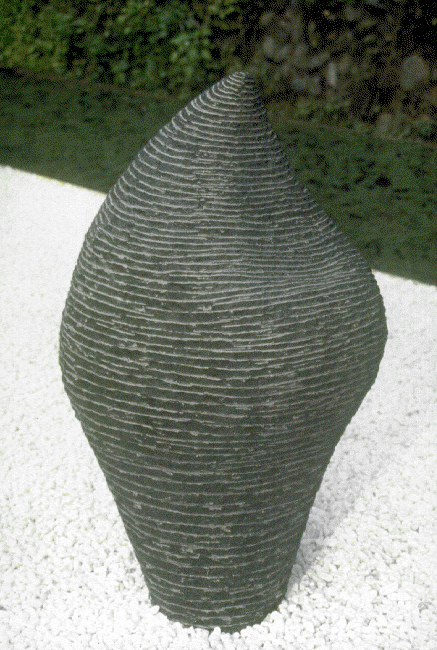
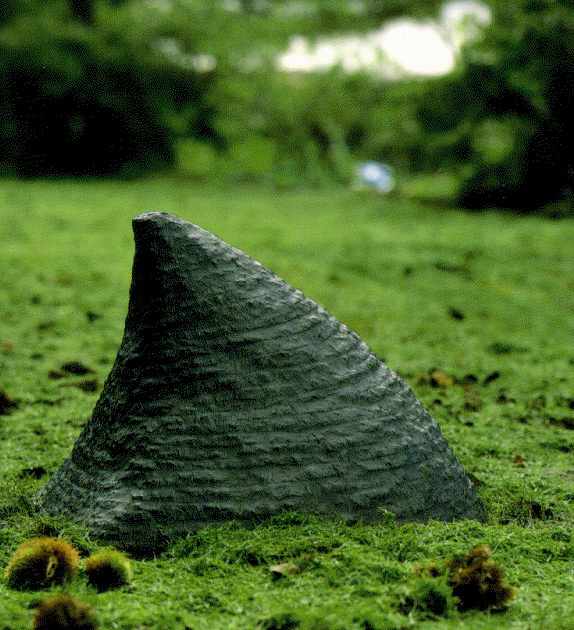
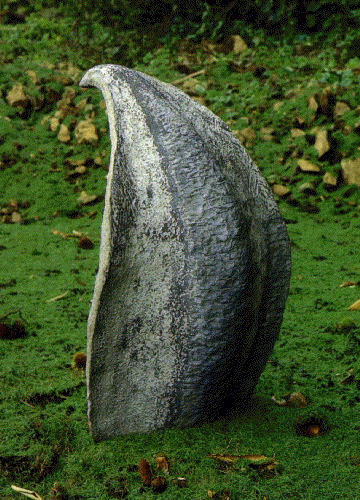
At the far end of the site I placed four concrete fragments of the
stone forms,
cast from various parts of the originals.
They
were installed right on the grass, unprotected by any enclosure,
and seemed to grow directly
out of the ground. The viewer was invited to explore
among this menagerie of plant and/or animal forms.
This area of the installation was meant to
eventually become overgrown, while the concrete would pit, crack,
and weather, further suggesting growth, change, and the passage
of time.